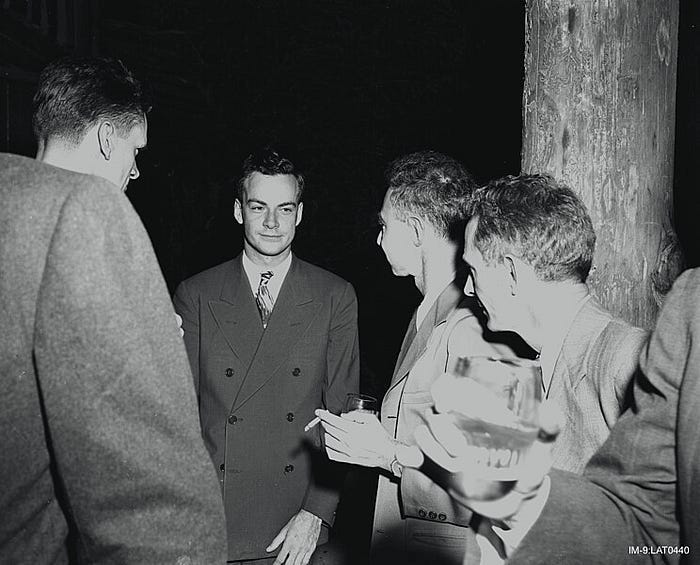A Legendary Creator Explains How To Do Great Work In Four Unsimple Steps
After funding over 3,000 startups, he designed this guide for success
6
“If you collected lists of techniques for doing great work in a lot of different fields, what would the intersection look like? I decided to find out by making it.”
— Paul Graham, “How To Do Great Work”
About seven hundred years ago, Dante Alighieri penned The Divine Comedy, one of the archetypal stories in modern literature. While classified as a religious text, it’s much more. Namely, it’s a reflection on being lost in life, and trying to find a pathway into the light of clarity.
Today, many things are still murky. For instance, how does one figure out what areas or fields they should devote their life to? And if you know, what does it take to become extraordinary in your chosen path?
Well, Dante ultimately found his way with the help of worthy guides who showed him the right route from the depths to paradise. But what about us?
While we don’t have Mr. Alighieri’s literary guides, we do have someone who’s navigated the path of work and creation extremely well. Paul Graham is a mixture of investor, programmer, and author.
He cofounded the first software as a service company called Viaweb, which Yahoo purchased in 1998. He also cofounded Y Combinator, which has funded over three thousand startups such as Airbnb, Dropbox, Stripe, and Reddit. He’s written three books. Plus, his website gets over twenty-five million visitors per year.
Graham became fascinated with finding an “intersection” for doing extraordinary work in multiple disciplines and sought to sketch it in a guide. After working with so many talented creators, he found four steps they usually followed.
Choose a field
Learn enough to get to the frontier
Notice the gaps
Explore promising ones
Unfortunately, his guide isn’t simple, but it does shine light on a clearer path. And it all starts with picking a direction.
Choosing A Field
“Develop a habit of working on your own projects. Don’t let ‘work’ mean something other people tell you to do. If you do manage to do great work one day, it will probably be on a project of your own. It may be within some bigger project, but you’ll be driving your part of it.”
— Paul Graham, “How To Do Great Work”
Graham says school tends to make us passive. We get used to having a central figure stand in front of us, then tell us what to do or work on. Our first step is to become active.
Only you can choose the field in which you’ll do great work. Ideally, steer to something you have interest in and have some aptitude for. Fortunately, we have an inner compass to guide us too. Graham says:
“Curiosity is the best guide. Your curiosity never lies, and it knows more than you do about what’s worth paying attention to.”
Actively follow this curiosity and experiment. Unfortunately, you’ll find dead ends. Ideally, if something becomes more interesting the more you examine it, that’s a good sign.
Graham says luck can play a good part in finding the place to go too. But it’s not all chance. He says, “You need to make yourself a big target for luck, and the way to do that is to be curious. Try lots of things, meet lots of people, read lots of books, ask lots of questions.”
But identifying an area to pursue is just the first step. It only gets harder from here.
Learn Enough To Get To The Frontier

“Even when you’ve found something exciting to work on, working on it is not always straightforward. There will be times when some new idea makes you leap out of bed in the morning and get straight to work. But there will also be plenty of times when things aren’t like that.”
— Paul Graham, “How To Do Great Work”
Unfortunately, excitement, interest, and curiosity must give way to work and effort to reach the frontier of knowledge in your chosen endeavor. This requires prompting; mainly from yourself.
Graham says the initial push to get you working is usually harder than the actual work itself. So, he recommends tricking your brain.
Tell yourself you’re only going to read over what you have so far.
Start out with the phrase “how hard can it be?”
Exaggerate the importance of what you’re working on in your mind.
He also warns about procrastination, and says it comes in two forms: daily and project. The things that hold off a project that’s important to you are the most dangerous. Moreover, it also disguises itself as work.
You become so busy that you put things off which are most important in your mind. Graham recommends you occasionally stop and ask yourself if you’re really working on what’s most important to you — like random check ins.
He also recommends you “consciously cultivate” a flavor for good work in your field and learn what makes it good. Also, join groups doing this work. Throughout history, icons in their field have done the same.
Ryan Holiday was author Robert Greene’s assistant, where he learned the ins and outs of writing books.
Aristotle studied at Plato’s Academy for twenty years before striking out on his own.
Dante Alighieri studied Brunetto Latini’s works and networked with a community of great writers in Florence, Italy.
As your knowledge grows, you suddenly see gaps in your field of expertise.
Noticing The Gaps
“We see the world through models that both help and constrain us. When you fix a broken model, new ideas become obvious. But noticing and fixing a broken model is hard. That’s how new ideas can be both obvious and yet hard to discover: they’re easy to see after you do something hard.”
— Paul Graham, “How To Do Great Work”
To find the gaps in your field, Graham advises looking for areas where models break down. He says they leave a “trail of clues where they bash against reality.” Ideally, the answer to fixing the model tends to be both bold and obvious.
The ability to notice the gaps is driven by two conflicting instincts: being stricter in your study than most and understanding different disciplines which your strong curiosity has driven you to look at.
The strictness instinctively tells you that the model doesn’t hold up to certain scrutiny. Moreover, the varying disciplines give you ideas to fix the model.
David Epstein in his book Range, explains in the 1600s it was believed the planetary bodies in the universe moved on “pure crystalline spheres” that were “interlocked like the gears of a clock”. But something confused Johannes Kepler.
A new star appeared (actually a supernova), and he tracked a comet crossing the sky, both which were counter to orthodoxy.
In other words, it broke the model. It led Kepler, with no knowledge of the force of gravity or modern telescopes, to formulate the Laws of Planetary Motion by using analogies from other fields.
But noticing a gap isn’t an end point, one must be able to identify promising ones.
Exploring Promising Gaps
“Boldly chase outlier ideas, even if other people aren’t interested in them — in fact, especially if they aren’t. If you’re excited about some possibility that everyone else ignores, and you have enough expertise to say precisely what they’re all overlooking, that’s as good a bet as you’ll find.”
— Paul Graham, “How To Do Great Work”
According to Graham the most overlooked problems don’t appear to be important when they really are. In fact, consensus blurs our vision. Originality in picking a problem to solve is often better than originality in solving the problem itself.
Discovering an important and novel problem to research can lead to finding entirely new fields. Graham says by asking yourself what you’d be doing if you weren’t doing “serious” work can point you in that direction. Moreover, even failures lead to discoveries.
There’s no better example than Richard Feynman.

As he walked through the cafeteria of a university he taught in, Feynman noticed a student tossing a plate in the air. Strangely, the logo on the plate spun quicker than it wobbled. It was unimportant, but Feynman decided to work out why this occurred, even after other teachers teased him about it.
As he worked on his “wobble” hypothesis, he noticed a similarity in the movement of electrons in relativity. Further connections kept coming.
He eventually developed a new way of understanding the relationship between light and matter, and won a Nobel Prize in 1965. Consequently, screwing around with a plate led to a breakthrough discovery in physics.
Obviously, this doesn’t mean screwing around is a path to success. But treasure may be hidden where others fail to look. And speaking of looking, it’s time to review what we’ve learned.
Just like Dante’s time, it’s still easy to get lost in life and know what direction you should work your way towards. Fortunately, we have a map of sorts.
Choose a field: Actively pursue things you’re curious about and have aptitude for.
Get to the frontier: Start the work, don’t procrastinate, cultivate taste, and find groups doing good work that you can join.
Notice the gaps: Find where the model breaks.
Explore these gaps: If it’s ignored but feels important, examine it.
-Originally posted on Medium 9/10/23



